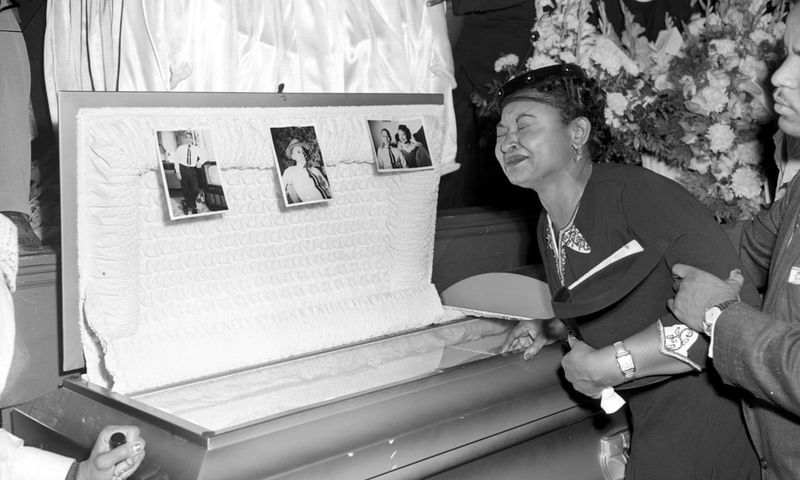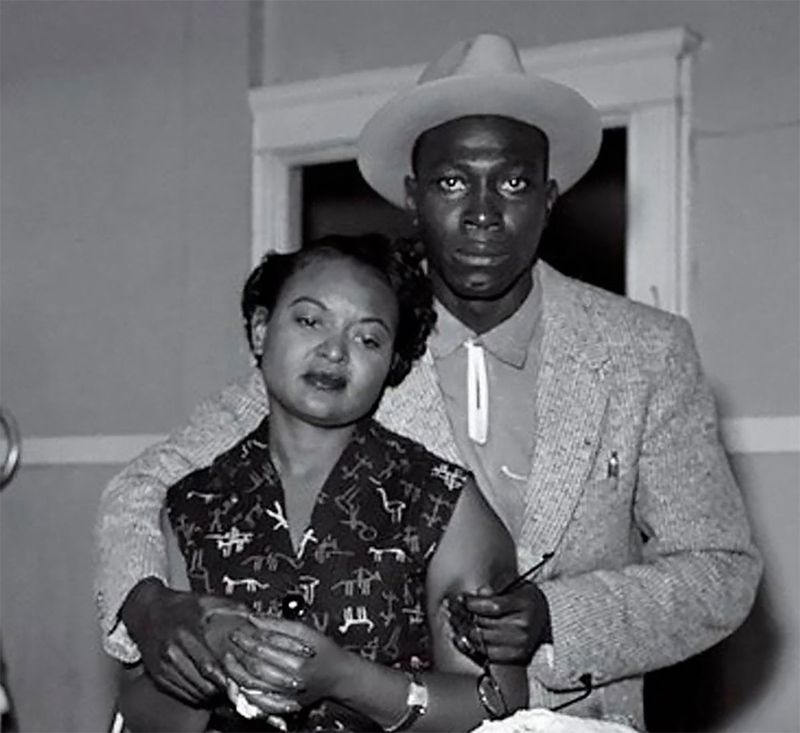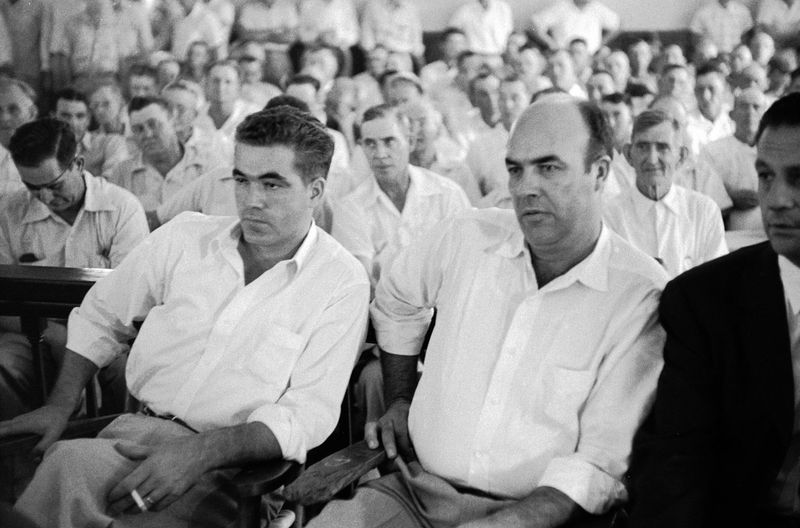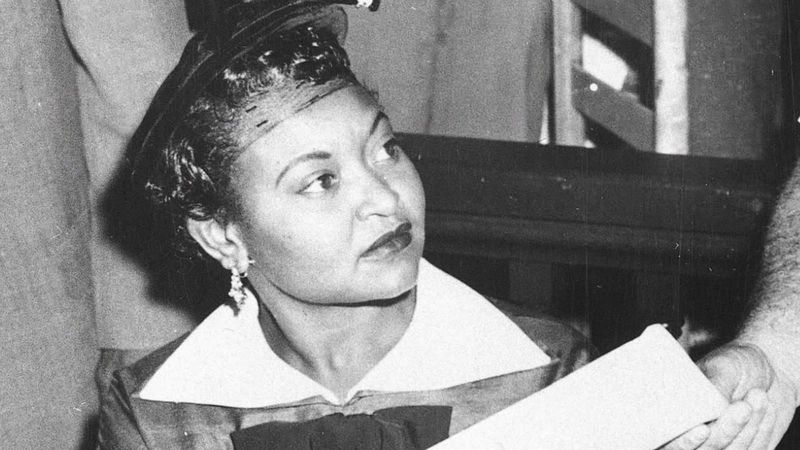In 1955, the brutal murder of a Black teenager changed America forever. Emmett Till’s death in Mississippi shocked the nation and became a turning point in the fight for civil rights.
His story revealed the violent reality of racism in the South and inspired a generation to stand up for equality and justice.
1. A Chicago Boy’s Fatal Trip South
Emmett Till was only 14 years old when his life was cut tragically short. Growing up in Chicago with his mother Mamie, he knew a different America than what existed in the Deep South. In August 1955, Emmett traveled to Money, Mississippi, to visit relatives. His mother worried about sending him, knowing the strict racial codes of the Jim Crow South were nothing like Chicago’s environment. Before leaving, she warned him about the dangers of interacting with white people in Mississippi. Little did she know this innocent summer trip would end in a nightmare that would shake the nation’s conscience.
2. The Whistle That Cost Him His Life
What happened at Bryant’s Grocery Store would seal Emmett’s fate. On August 24, 1955, he allegedly whistled at or flirted with Carolyn Bryant, the 21-year-old white store owner’s wife. Some accounts suggest he may have said “bye, baby” or whistled after buying candy. Others believe his Northern accent or stutter might have been misinterpreted as disrespect. In the Jim Crow South, any perceived violation of racial boundaries by a Black person could be deadly. For a young Black boy from Chicago who didn’t understand these unwritten rules, this innocent interaction became a death sentence.
3. Kidnapped in the Dead of Night
Three days after the store incident, Roy Bryant and his half-brother J.W. Milam came hunting for the boy who had “insulted” Bryant’s wife. Armed with pistols, they arrived at 2:30 AM at the home of Emmett’s great-uncle, Mose Wright. Despite Wright’s pleas, the men forced their way in and dragged Emmett from his bed. “We’re taking him for a ride. We’re just gonna talk to him,” they claimed. Wright, like many Black Mississippians, lived in terror of white violence and had no power to stop them. Emmett was forced into their truck and driven away into the darkness.
4. Unimaginable Torture and Murder
The brutality inflicted on Emmett Till defies comprehension. For hours, Bryant and Milam tortured the teenager in a tool shed, beating him so severely his eye dislodged from its socket. They forced him to carry a 75-pound cotton gin fan to the Tallahatchie River. At the riverbank, they shot him in the head, tied the fan to his neck with barbed wire, and dumped his body into the water. Three days later, Emmett’s corpse surfaced downstream. His face was unrecognizable – swollen beyond identification, with only a ring his mother had given him confirming his identity.
5. A Mother’s Courageous Decision
When Mamie Till-Mobley received her son’s body in Chicago, authorities had sealed the casket, hoping to hide the horror inside. She insisted it be opened. “Let the people see what they did to my boy,” she declared in a moment of raw courage. Mamie chose an open-casket funeral, allowing thousands to witness firsthand the barbaric reality of southern racism. Jet magazine published photos of Emmett’s mutilated face, sending shockwaves across America. Black newspapers nationwide ran the images, forcing the country to confront the truth many had ignored.
6. A Mockery of Justice
The trial of Bryant and Milam began on September 19, 1955, in a segregated courthouse in Sumner, Mississippi. Despite overwhelming evidence and Mose Wright’s unprecedented testimony identifying the kidnappers in court, justice seemed impossible from the start. Black spectators were forced to stand in the back while white observers had seats. The all-white, all-male jury deliberated for just 67 minutes before acquitting both men. One juror later remarked they would have decided sooner “if we hadn’t stopped to drink pop.” The verdict confirmed what many already knew: in the Jim Crow South, Black lives held little value in the eyes of the law.
7. Killers Confess With No Consequences
Protected by double jeopardy laws, Bryant and Milam sold their confession to Look magazine for $4,000 (equivalent to about $43,000 today). In the January 1956 issue, they brazenly detailed how they murdered Emmett Till. “When a n***** gets close to mentioning sex with a white woman, he’s tired o’ livin’,” Milam told the reporter. The men showed no remorse, believing they had done nothing wrong. The confession outraged Americans who had followed the case, yet the killers faced no legal consequences. Both men died as free men – Milam in 1980 and Bryant in 1994.
8. The Spark That Ignited a Movement
Emmett’s murder became a catalyst that energized the civil rights movement. Just 100 days after his death, Rosa Parks refused to give up her seat on a Montgomery bus, later saying, “I thought of Emmett Till and I couldn’t go back.” Dr. Martin Luther King Jr. frequently referenced Till’s case in speeches. A generation of young activists, including John Lewis and Muhammad Ali, cited Till’s murder as their awakening to activism. The shocking images of his battered body created a visual testimony that could not be ignored. Till’s death transformed abstract discussions about racism into an undeniable moral crisis demanding action.
9. Mamie Till-Mobley’s Lifelong Crusade
Grief transformed Mamie Till-Mobley into a powerful voice for justice. Rather than retreating in sorrow, she channeled her pain into purpose, traveling the country to speak about her son’s murder. She founded the Emmett Till Players, a group of young people who memorized and performed Dr. King’s speeches. Mamie became a teacher, earned a master’s degree, and dedicated her life to education and civil rights. Until her death in 2003, she never stopped telling Emmett’s story, saying: “The death of my son has been a catalyst for change in America.” Her unwavering courage ensured her son’s legacy would transform the nation.
10. Justice Delayed and Denied
Decades passed without accountability for Emmett’s killers. In 2004, the Justice Department reopened the case after new evidence emerged, but no new charges resulted. A shocking revelation came in 2017 when Carolyn Bryant Donham (formerly Carolyn Bryant) admitted she had fabricated parts of her testimony. “Nothing that boy did could ever justify what happened to him,” she told historian Timothy Tyson. Despite this confession and multiple investigations, no one has ever been convicted for Emmett Till’s murder. His case remains one of America’s most notorious examples of injustice, a wound that has never fully healed.










